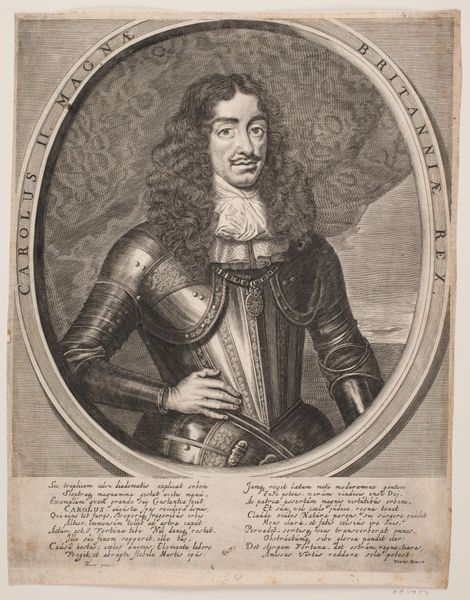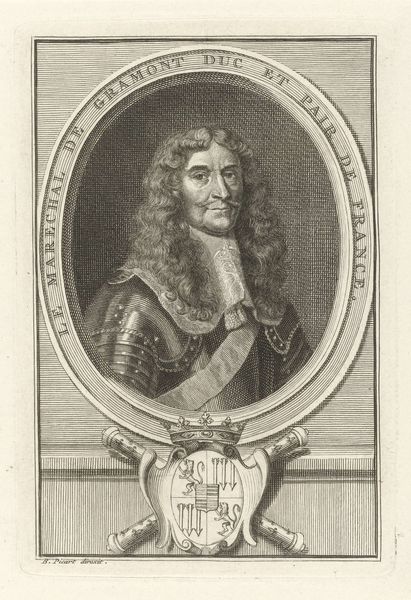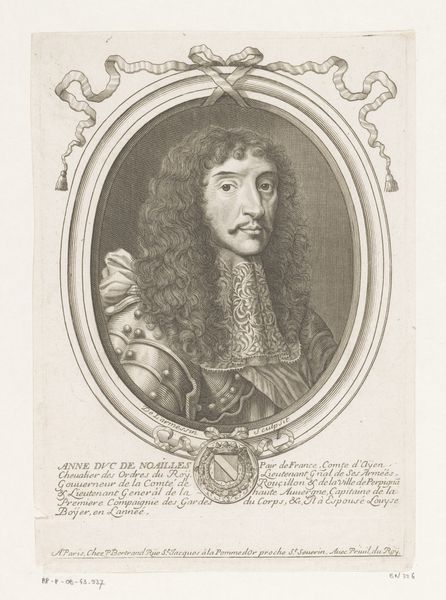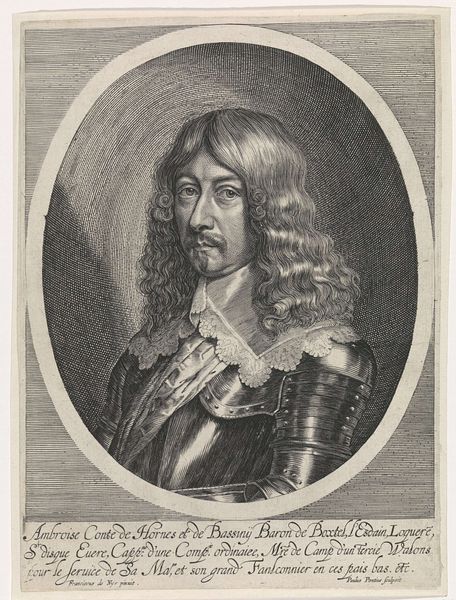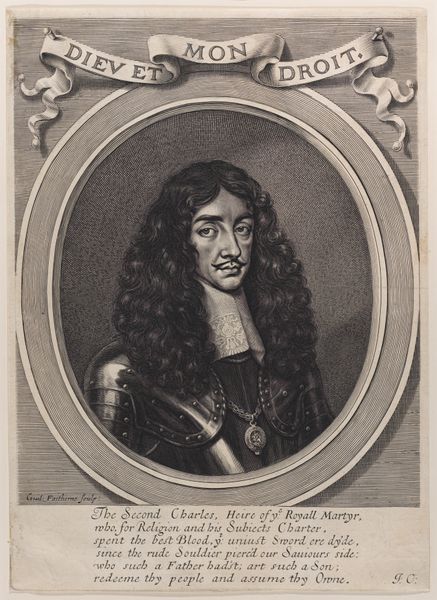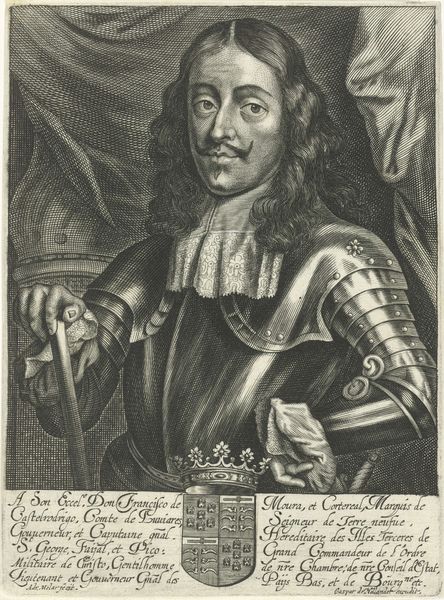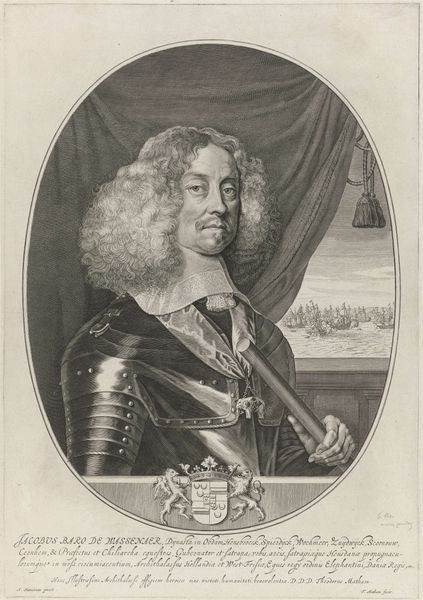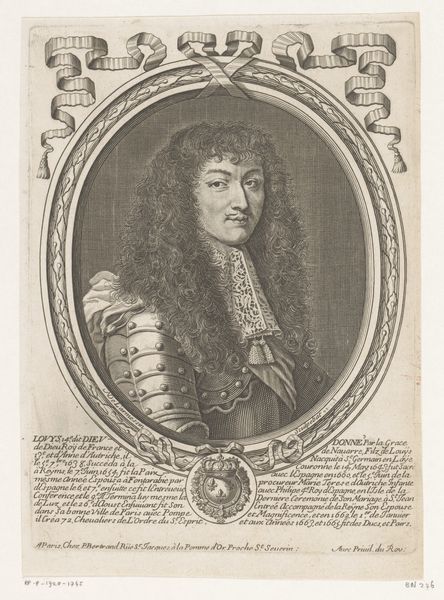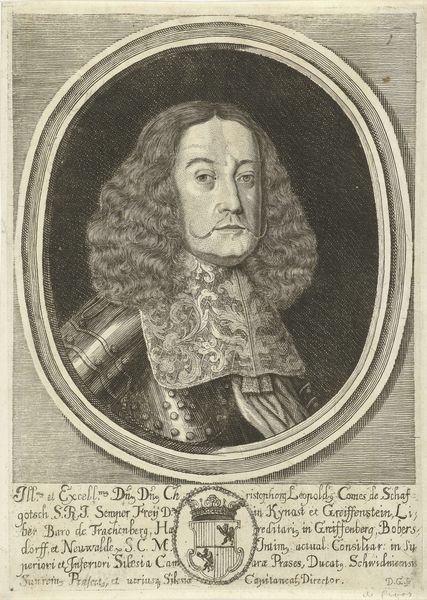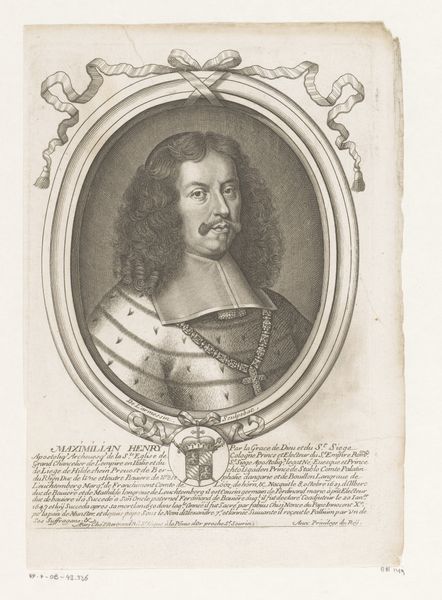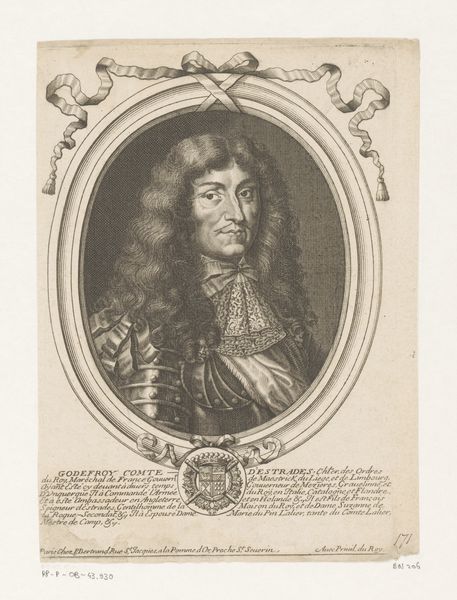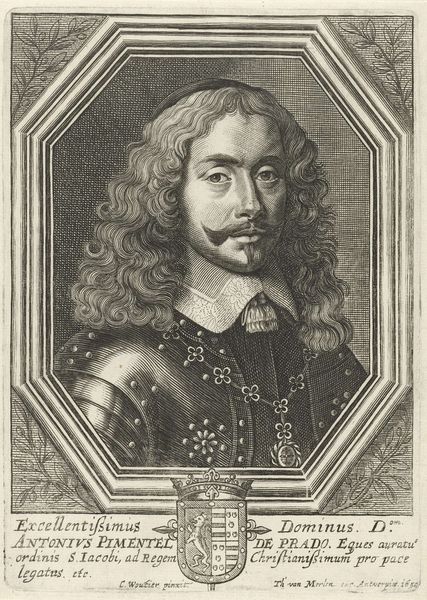
print, engraving
#
portrait
#
baroque
# print
#
portrait reference
#
old-timey
#
history-painting
#
engraving
Dimensions: 350 mm (height) x 275 mm (width) (bladmaal)
Curator: Ah, here we have "Karl II af England" a piece realized between 1660 and 1663. It resides here at the SMK. What springs to mind for you with this portrait? Editor: Well, it's certainly a formal affair. Imposing, with all that armour, yet somehow, almost... theatrical? The oval frame feels like a proscenium arch, and the sitter, Karl, looks a bit like he is giving us a royal monologue. Melodramatic, perhaps? Curator: You know, it’s an engraving, an early form of mass media really, made by Albert Haelwegh. Prints like this were key in shaping and disseminating royal imagery. Charles had just been restored to the throne, so projecting an image of power was essential. That armour, for instance, speaks to military strength, but is he likely to go into battle? Probably not! Editor: Right, the performance of power. That armor becomes a costume. And look at that inscription—the Latin phrases that function as carefully constructed propaganda to project legitimacy. Consider the violent uprisings the monarchy inflicted on populations abroad as England became Great Britain; it casts a sharp contrast with this ideal of strength. Curator: Absolutely. There's a tension there. This work has to straddle conveying royal authority after years of political turmoil, but also offer a softer vision, promising stability and peace. The face itself, perhaps hinting at world-weariness despite all the pomp and circumstance? The man in control but bearing the weight of history, almost burdened by all those responsibilities. Editor: Yes, burdened, perhaps also a touch calculating? What about those gorgeous curls escaping beneath his armored collar. They give an entirely new sense to the persona presented here. It feels so calculated, almost a rejection of earlier more stoic monarchs. Curator: True, the flowing hair does soften the rigidity, adds a touch of sensuality and humanity. After the austere years of Cromwell's puritanical rule, Charles' court was known for its decadence and artistic patronage, elements that definitely played into his "brand." Haelwegh had a fine eye for detail. Editor: Precisely, detail deployed with a political agenda, to reconstruct Charles's public persona. Thinking about it more, it becomes clear how effective propaganda, and really powerful portraits, are often about careful editing of realities that are not always easily reconciled. Curator: So well said. What's more fascinating than a visual riddle designed to convince us to see the world in a specific light? Editor: It's a stark reminder that even seemingly straightforward images have these layers of meaning and purpose, and a context deeply intertwined with power dynamics. I see it now as both a historical artifact and a carefully constructed argument.
Comments
No comments
Be the first to comment and join the conversation on the ultimate creative platform.
